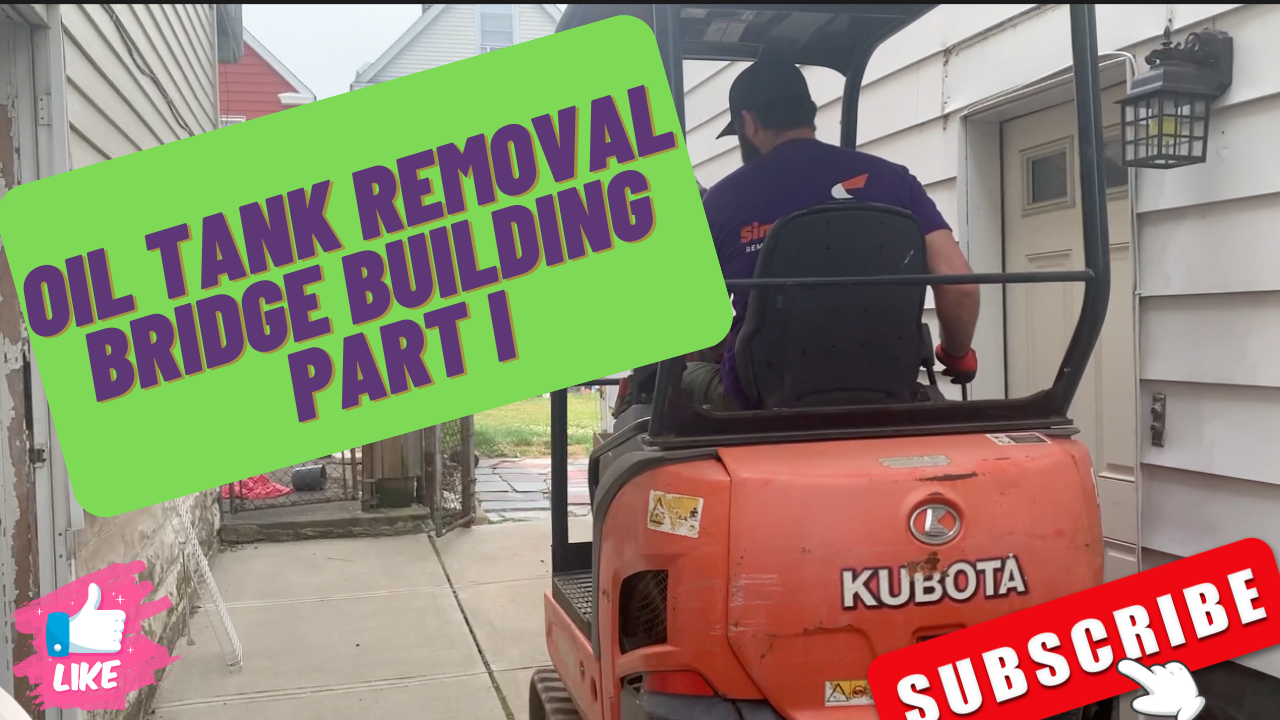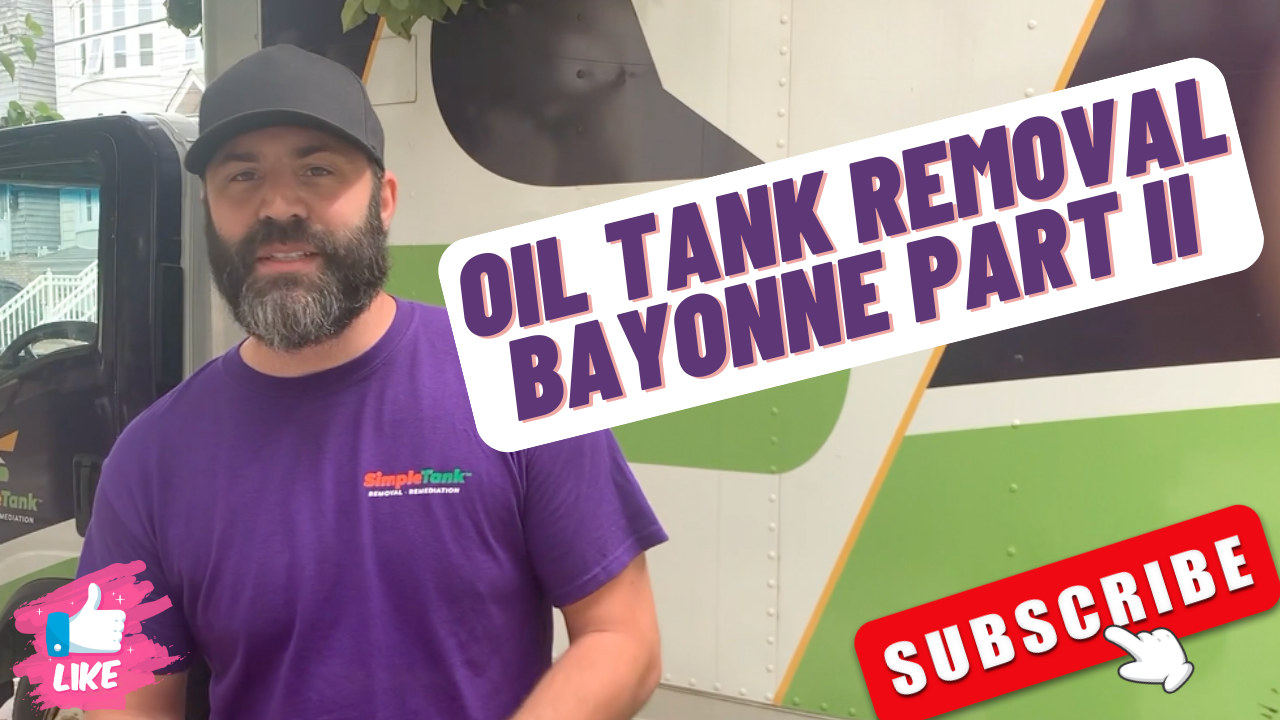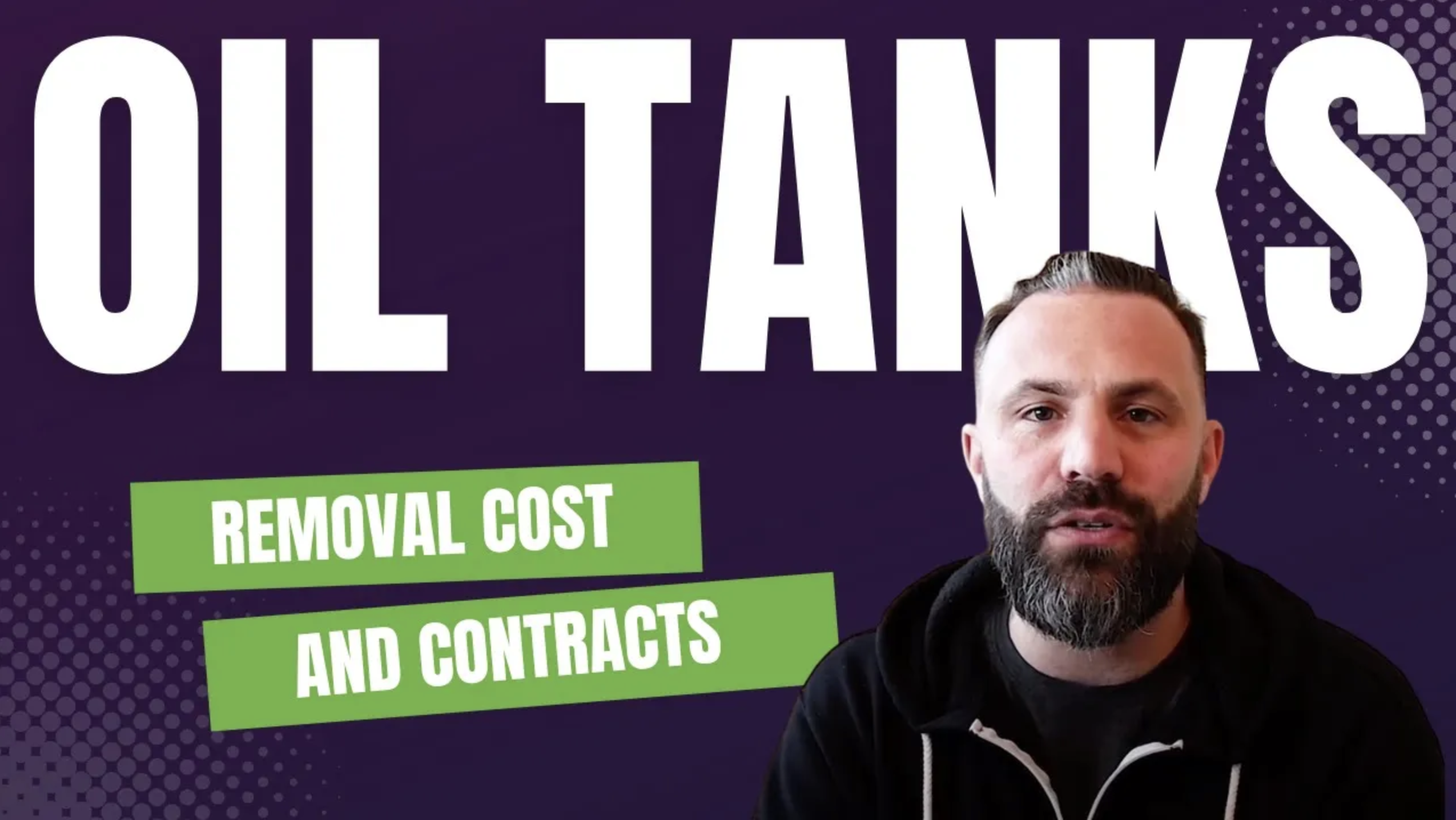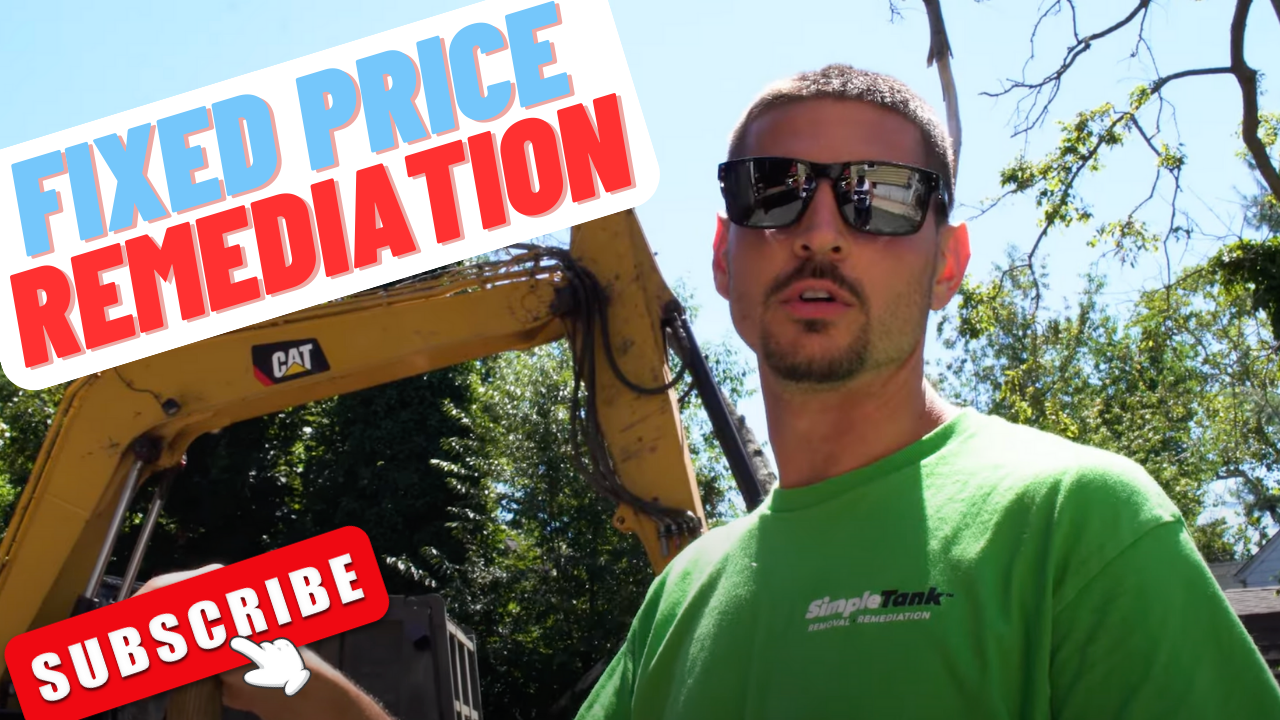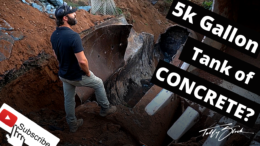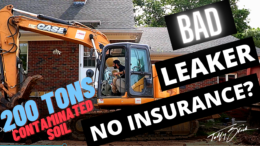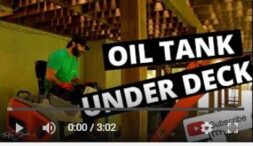Join us in this challenging excavation project as we confront the possibility of a leaking tank and potential soil contamination. Our main focus today is to safely remove the tank and assess the extent of the damage. We’ll take you through the process of maneuvering our machine up narrow steps and cutting a fence post to gain access to the backyard. Our priority is to excavate the tank, but the real challenge lies ahead if contamination is detected. We’ve taken soil samples and sent them to the lab for analysis to determine the contamination levels. Our goal is to meet clean standards with levels below 1000 parts per million. In the meantime, we’ve covered the contaminated areas with protective plastic while we await the lab results. Stay tuned to witness the outcome and our strategic plan to remediate the soils if needed. It’s a tough job, but we’re ready to tackle it head-on!
Author: admin
Tank TV Episode 20 – Tight Access Oil Tank Removal Bayonne Part II
Join us in Bayonne for another exciting episode as we complete the backfilling process after successfully removing a 550-gallon underground oil tank situated on a challenging retaining wall.
Witness our efficient method of scooping soil from the back of the truck and pushing it over the wall to backfill the excavation. This approach not only saves time but also significantly reduces costs compared to manual labor.
Stay tuned as we head to our next job with tight access and overcome another intriguing obstacle. Don’t miss a moment of our thrilling tank removal adventures! #Bayonne #OilTankRemoval #Backfilling #ChallengingJob #Excavation
Tank TV Episode 19 – Tight Access Oil Tank Removal
Welcome to Tank TV, Episode 19! In this exciting episode, we tackle the challenging task of removing an oil tank situated atop a retaining wall. You won’t believe the steps we take to access it.
First things first, we need to cut the railing to create a pathway over the retaining wall. Don’t worry, we discussed this with the client beforehand to ensure they were aware of the necessary modifications. By cutting the railing, we save them thousands of dollars that would have been spent on manual excavation. Once we’re done, a skilled welder will restore the railing to its original condition.
With preparations complete, it’s time to locate the tank. Using a metal detector, we pinpoint its exact position. As we begin excavating, we discover a patch and remnants of foam, indicating previous maintenance. These findings are not uncommon, but they add to the intrigue of the job.
Working in tight quarters between two houses presents its own set of challenges. To complicate matters, there’s limited space for soil disposal. Our small excavator requires significant digging to extract the tank, which is filled with foam, making it heavier and more difficult to handle.
Prior to excavation, we take precautions to ensure utilities are safely out of the way. We confirm the location of the waterline, gas lines, and sewer lines by examining the basement and verifying their paths. This meticulous process guarantees the safety of the property and our crew.
As we approach the tank, we cut the oil lines connecting it to the furnace. This step is crucial to facilitate a smooth removal process. With the lines severed, we’re ready to extract the tank.
Cutting two holes in the top of the tank allows us to gain leverage and secure our equipment for the removal. It takes some effort, but we successfully extract the tank from the ground, ensuring no damage is caused in the process.
Job complete! The tank is out, and upon inspection, it appears there was no discharge into the soil. The homeowner got lucky this time. We’re wrapping things up for now, but we’ll return on Tuesday to backfill the excavation. Due to the access challenges posed by the retaining wall and tight space between the houses, this has been a two-day job.
Stay tuned for more exciting content as we continue our tank removal adventures. Thanks for watching, and we’ll see you next time!
Oil Tank Removal Cost and Understanding the Contracts
Hey everyone, it’s Teddy from Simple Tank Services, and in today’s vlog, we’re delving into oil tank removal proposals and the real cost behind them. It’s crucial to understand the estimates you receive, beyond the eye-catching total at the bottom, as that won’t reflect your final invoice.
Join me as we uncover how 99% of the industry quotes projects compared to Simple Tank’s approach. When you reach out for estimates to remove your tank, various contractors follow different processes. But what truly matters is the content of the estimate, not just the final number. Don’t be deceived by a seemingly low price without examining the line items.
Permits play a significant role, with townships charging anywhere from $75 to $500. Additionally, the contents of the tank are essential to address. Is it filled with wood, oil sludge, or even water? Proper disposal is crucial, with most companies charging around a dollar per gallon for waste removal. If the tank contains sand or foam, extra disposal fees may apply, ranging from $900 to over $3000.
At Simple Tank, we make things simple. We quote 95% of our projects over the phone, allowing us to provide a flat rate price that includes everything. Permits, tank contents, sand, and foam disposal are all covered. The only potential additional cost is if police presence is required for inner-city projects, and we pass that cost through to you without any additional fees.
Let’s talk numbers. For a 550-gallon tank with easy access, our flat rate price is $1400. If you have a 1000-gallon tank, the price is $1800. However, please note that these prices are for projects with straightforward accessibility. If your situation involves more complex factors like fences, retaining walls, or limited access, reach out to us for a custom quote. We’re here to gather the details of your project, and in most cases, provide a proposal within minutes.
Remember, the contractor’s process matters as much as the price. Be sure to watch our video on the removal process for underground oil tanks, linked in the description. If your tank passes inspection, our quoted price remains unchanged. However, if it fails, a separate project and a different process will be necessary.
If you have any questions about the contract or the cost of removing your underground oil tank, don’t hesitate to fill out the form below or call our office. We’re available Monday through Friday, 9 to 5. We can’t wait to hear from you. Thank you!
Tank TV Episode 18 – Fixed Price Remediation
Join us in our latest company vlog as we venture into Highland Park for an exciting oil tank removal and site remediation project. Witness the efficient removal of a significant amount of contaminated soil, totaling approximately a hundred tons. Stay tuned as we await the arrival of certified clean fill to complete the backfill process and restore the site to its original condition.
During our site remediation endeavors, we rely on a remarkable device called a Photo Ionization Detector (PID) to screen soil samples and accurately assess trace contamination levels. Keep an ear out for the distinctive beeping sound that alerts us to potential issues.
Experience the meticulous execution of our tasks and learn about our partnership with Clean Earth, where all contaminated soil finds its proper disposal.
As we near the conclusion of this project, we eagerly anticipate the backfilling process to bring the excavation back up to grade. Join us as we wrap up another successful job, demonstrating our commitment to excellence in oil tank removal and responsible remediation practices.
Subscribe to our vlog and join us on this thrilling journey as we showcase our expertise in Highland Park. Stay informed and be part of our ongoing adventures!
Why would you want a fixed price soil remediation contract?
Experience the peace of mind with our fixed price contracts, providing you with complete clarity on project costs from the very beginning. Unlike open-ended contracts, where estimates can vary, our fixed price contracts eliminate uncertainty, allowing you to rest easy knowing the final invoice is predetermined before any site work begins.
Investors, particularly those involved in house flipping, appreciate the benefits of fixed price contracts. They can confidently assess their liabilities, leveraging this information during negotiations with sellers, secure in the knowledge that costs won’t fluctuate during the project.
Our fixed price contracts also cater to clients seeking transparency and certainty in their project expenses. Whether you’re an investor or homeowner, our commitment to fixed prices ensures you know exactly what to expect, giving you full control over your budget and peace of mind throughout the process. Choose the certainty and predictability of fixed price contracts for your next project.
Episode 17 – Install a New Oil Tank in 2020?
In this episode, Teddy talks about why some clients would want to install a new oil tank in 2020. If you have an active underground heating oil tank and you want to sell your home, you can upgrade to an aboveground oil tank. The new aboveground oil tank will come with a $1,000,000 insurance policy from the manufacturer.
In this episode, we remove two 1,000 gallon underground oil tanks and install two new 400 gallon aboveground oil tanks. We explain the cost of oil tank replacement.
Each underground heating oil tank was removed from the site and scrapped at a local scrap metal yard. The new aboveground heating oil tanks were installed the same day the old tanks were removed. We removed the oil from the underground tanks and pumped into new tanks. The location of the tanks were back filled to grade all the same day. The client only had no heat for six hours.
You can find additional info about Roth tanks here http://Www.roth-USA.com
Episode 16 – Concrete Filled 5k Gal Oil Tank
In this episode of Tank TV, we were hired to remove one 2,500 gallon previously sand filled tank. After uncovering the tank, we found that it was 5k gallon filled with concrete. We mobilized a second excavator that had a jack hammer attachment. We eventually blew a hydraulic hose on the 2nd excavator and had to mobilize a third excavator in order to get the tank out of the ground. We started the project at 8am and it took until 7pm for us to get the tank out of the ground!
Episode 15 – Oil Tank Leak, Insurance Pays?
In this episode of Tank TV, STS performs an open ended soil remediation at a residence in Bedminster. Simple Tank removed this active 550 gallon heating oil tank and found that is was covered with corrosion holes.
We started to remediate the soils and found that the oil made its way down to fractured rock. The oil also reached groundwater table. After removing 200 tons of contaminated soil, we still had free floating product (heating oil) on top of the groundwater.
This was after removing 2,000 gallons of groundwater via vacuum truck during the remediation.
Since the homeowner has lived in this house for 28 years, we recommended that they call their homeowner’s insurance company to see if they could be covered under the 3rd party liability coverage portion of the policy. This was part of every homeowner’s insurance policy up until about 2012.
If you recently bought your house, you will not be eligible for any insurance coverage unless your tank is active and you took the coverage your oil provider offers. The insurance company for this residence gave us the green light to perform the 3rd party investigation which consists of us installing a temp monitoring well to determine if the groundwater is impacted.
Stay tuned to see what happens with this project.
Tank TV Episode 014 – Soil Borings, the Simple Way!
In this episode, our operations manager Matt Haines performs soil borings at three different locations in the same day. Two of the locations, he was testing the soil around an existing underground oil tank. The last location, we knew there was contamination since the tank had already been removed. The client wanted us to provide them with a fixed price to remediate it.
Video shot and edited by Malik Lopes
Instagram – @squeakyleaky
Tank TV Episode 013 – Oil Tank Under Deck!?
In this episode, we remove a previously filled underground oil tank that is located under a deck under asphalt! We were working within inches of the deck, an AC unit and structural supports!
The tank was removed without incident and passed the township inspection.

